Demand Pulls Back in First Quarter as Cautious Office Tenants Play Wait-and-See on Expansion, Relocation Plans
U.S. office employment posted the largest quarterly increase in more than a year in the fourth quarter of 2015. The office employment growth was especially strong in second-tier and lower-cost tech markets, such as Salt Lake City, Austin and San Diego posted the strongest gains year-over-year, according to recently released employment and U.S. Census data.
Net absorption of office space, which tracks tightly with office hiring, totaled 61.6 million square feet in 2015 — the highest level in nearly a decade — as new construction lingered well below historical averages and the national office vacancy rate fell by another 90 basis points, matching the largest decline of the current real estate cycle, according to national research sources and CoStar data. More than three-quarters of U.S. office markets tracked by CBRE saw vacancy rates decrease in 2015.
The early returns for 2016 appear to show a softening in office demand. Companies added an average of 40,000 jobs in January and February, down from the robust monthly average of 73,000 at the end of last year, according to U.S. Bureau of Labor Statistics data.
National real estate sources note that the preliminary early 2016 numbers follow a similarly trend from 2014 and 2015 in which office absorption started the year at a slowed pace before ultimately picking up momentum later during both years. Office-dwelling job growth exceeded 2% for the 19th straight month in February.
“The early data support the view that for 2016 office-using job growth will continue to fuel tenant demand which, in combination with still-low levels of construction activity, will result in the vacancy rate approaching pre-recession levels by year-end.
Poring Over Demand Metrics
As U.S. companies again get antsy and uncertain over the direction of the broader economy in the early months of the year, real estate analysts are closely watching jobs, absorption and other key U.S. office market indicators for signs of a potential slowing in demand.
Preliminary analysis by national commercial real estate sources show first-quarter office leasing data that suggests demand did slow in the first quarter, though not precipitously, as wary tenants stayed the course on corporate expansion decisions early in the year. Austin, San Antonio, Silicon Valley and other high-demand markets posted a smattering of occupancy growth, although overall U.S. demand was flat at best in the first three months.
Office construction hasn’t kept up with demand in most markets. Deliveries, while reaching a six-year high in 2015, still totaled less than half of their 2008 peak of 75.9 million square feet. A company survey in February of available large blocks of office space 100,000 square feet or larger, in fact, suggests that construction won’t rise to a sufficient level to sate demand during the next six months.
Just three of the largest office markets expected to see an uptick in delivery of large-space blocks, whose availability stimulates broker property tours and demand from expansion-minded tenants jumping into the marketplace.
Suburban Houston, one of the three markets, is seeing space availabilities swell, but not because big supply is cranking up the inventory. It’s due to large give-backs of space by retrenching energy firms in reaction to falling oil prices. Suburban Dallas/Fort Worth and downtown Seattle, which both have healthy office construction pipelines due to tech and financial company expansion and migration, are gearing up to deliver huge developments from their very busy construction pipelines.
The Texas markets of Houston, Dallas, Austin and San Antonio, along with Atlanta, Phoenix, Orlando and other Sunbelt and western markets, logged the strongest numerical population gains from July 2014 to July 2015, according to new U.S. Census figures. Unlike the retail sector, where demographic growth directly propels shopping center sales and per-square-foot productivity, office demand tracks more directly with larger payrolls and more new jobs.
Population Gains Alone Don’t Tell Full Office Story
Metros with available space to grow tend to see more inbound migration. The more mature San Jose market, for example, doesn’t rank among even the top 20 fastest-growing metros for population growth.
Driven by the rapid expansion of both established and startup technology companies, however, Silicon Valley logged by far the strongest year-over-year office job growth rate in the nation at over 8% in the final quarter of 2015. Population growth on the tightly packed San Francisco peninsula, along with Salt Lake City, which also did not rank among the top 20 markets for population growth, ranked second and third at just over 6% job growth in the fourth quarter.
However, second-tier tech markets such as Austin, San Diego, Portland and Raleigh shined, with annual growth of more than 3%, followed by Orange County, Orlando, Salt Lake City and other evolving tech hubs, where some startups are starting to move the beat high housing and business costs. Recovering housing bust markets like Atlanta, Phoenix and San Antonio, also boasting a nascent tech company presence, reported strong office job gains as well.
Markets with tightening availability paired with growing demand include downtown Philadelphia, and the downtown and suburban markets of Atlanta and Chicago, as well as suburban Orange County. These metros are poised to benefit over the next months from rents that haven’t yet risen to levels justifying large-scale speculative construction, keeping supply limited and giving landlords more pricing sway in lease negotiations.
By Randyl Drummer
